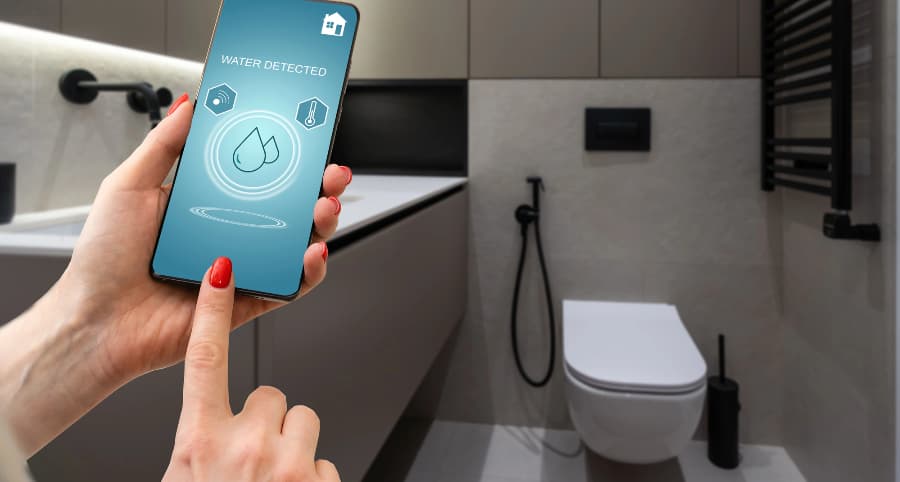How does a water sensor work and why connect one to your Topeka smart home?

One small leak in your home can result in significant problems and thousands of dollars worth of damage. You need to defend against this threat; luckily, there’s a simple way to accomplish this. A water sensor is an effective, simple, and economical solution. Explore how they work and why you might integrate water sensors into your Topeka smart home.
How water sensors safeguard Topeka homes
Water penetrates homes in various ways, whether from a plumbing issue, weather-related incident, appliance snafu, or simple human error. Whatever way it takes place, you have to know right away, and this is why water sensors are important. But how precisely do they work?
Many water sensors are conductive and work with a pair of electrodes. When water makes contact with the electrodes, an electrical connection is formed, triggering your alarm. You’ll also come across capacitive sensors that give off an electrical field. When water contacts the conductive parts of these sensors, the field is broken, and your alarm activates. Optical sensors utilizing infrared LED light are an additional choice.
Get more from your water sensor
Some specialized water sensors offer even more defense as they have incorporated temperature sensors. This is an outstanding benefit in preventing frozen pipes. If there’s a drastic reduction in temperature, you’ll know immediately. Taking action before pipes break will protect you from water damage and exorbitant repair costs.
Why incorporate water sensors into your Topeka smart home?
When water problems arise, you need to be warned immediately. You can attain this goal by connecting water sensors to your smart home. Whether you’re on site to hear the alarm or not, you’ll be sent an immediate notification on your cell phone. As an additional backup, your round-the-clock monitoring team will be informed. Each second is critical in a water emergency to minimize the damage and disruption to your life.
Where should you put water sensors?
Any spot at risk of water infiltration is a suitable place for water sensors. Put them in these spots:
- Bathrooms: Attach next to tubs or at the back of toilets.
- Basements: Water often seeps into basements via damaged walls or because of excessive rain or broken sump pumps.
- Next to water heaters or appliances: Any water-using appliance may leak in time.
- Below sinks: Water sensors are great for identifying leaky pipes in areas hidden from view.
- Attics: Catch roof leaks promptly and avoid expensive repairs.
Request water sensors with your Vivint smart home
Give your property the comprehensive protection it deserves with Vivint’s advanced devices. Our water sensors in Topeka connect to your Vivint smartphone app to provide immediate notifications whenever your alarm is triggered. You also benefit from integrated temperature sensors to avoid pipe freezing. Discover all the smart home devices available in Topeka by calling (785) 369-9429 today.